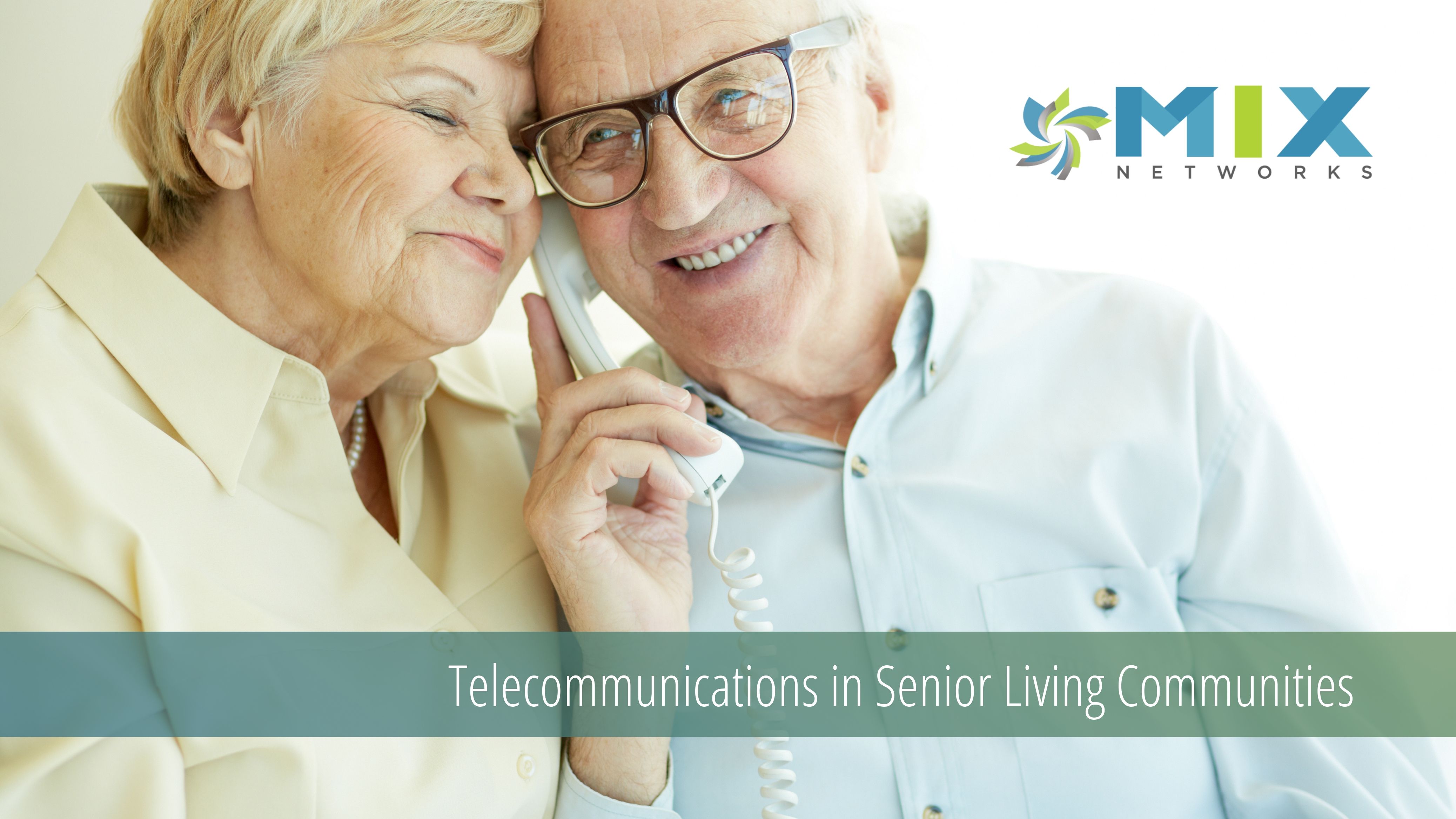As of 2016, over one million Americans lived in some type of senior living community, with that number expected to double by 2030, according to an American Senior Living Communities report. And not only are more Americans living in senior communities than in previous years, the technology gap is closing between the generations. More and more seniors are engaging in and using technology to better their lives and keep up with their family. A survey of seniors by UnitedHealthCare in 2012 found that “staying socially engaged is just as important to healthy aging as genetics and maintaining a healthy body.”
As a provider of senior living facilities, you know just how important maintaining the physical health of your residents is, but what about their mental and emotional health? Even though nothing can take the place of physical interactions with family members, video and voice communications can fill the gap in giving your residents the social interactions required for a healthy lifestyle.
How do you know if your Senior Living community telecommunications solution needs an upgrade?
Telephony has been a standard form of communication since the telephone became widely used in 1910. Since then, the industry has undergone significant transformation, moving from copper wires to fiber and VoIP, providing significant upgrades in features, functions, and reliability. So while you have installed a telecommunications solution in your senior living community, the question is, is it really meeting yours, and your residents, needs? In our white paper, “8 Reasons to Upgrade the Phone System in Your Senior Living Community,” we go into greater detail, but here is a quick summation:
-
- You have outgrown your current system – standard on-premise technology is held back by the physical capacity of the server to handle the number of endpoints it can process. If your system is unable to process the current calling needs of your growing community, there are options available to help you meet their needs.
- You are paying too much – while this reason is highly subjective and dependent on your budget and other factors, there are times where you legitimately are paying more than you need to in order to provide the services and features your residents (and staff) need.
- Your staff and residents need added features and functionalities – this goes along with the above, as adding features and functionalities to existing solutions can be cost-prohibitive. But VoIP solutions delivered through a cloud-based solution can give you access to the latest upgrades for as long as you subscribe to the solution.
- Your current solution is an “island” – Technology changes rapidly. Solutions such as patient wander alerts, nurse call systems, mobile access, and emergency notifications are all becoming standard protocol in resident care, but your current solution is unable to combine with these newer technologies.
- Billing your residents for phone usage is a nightmare – Your hosted solution should be able to tie into your billing system, enabling you to easily and efficiently bill residents for usage if that is a part of your services.
- Emergency calls are not monitored – In traditional telephony, each phone can be mapped to a particular location, aiding first responders in finding the caller. Unless your on-premise solution is custom-designed for a senior living facility, this can be a concern. If your solution is not currently designed to lead first responders to the actual room the call was made from and concurrently notify facility staff who can provide aid until the first responders arrive, then you should strongly consider upgrading your solution.
- Support and maintenance are painful – Maintaining aging solutions is challenging. Parts are harder to find, the design is complex, and most systems charge for every add, move, or change performed.
- No built-in Redundancy and Business Continuity/Disaster Recovery – Does your solution shut down in the event of a power outage? Either from a storm or an accidental cut in the lines or malicious acts? If not, your residents could be at significant risk from an extended power outage.
Can you relate?
If you answered yes to any of the above points, moving to a hosted PBX solution is in your facility’s and resident’s best interest. Contact us today to learn more or download our free white paper, to learn more about the importance of telecommunications in Senior Living facilities.








